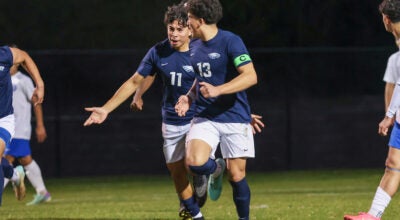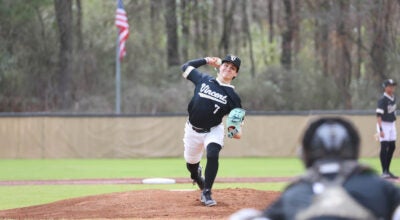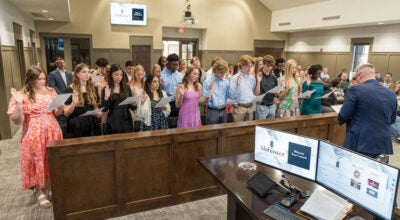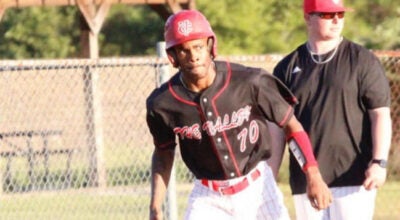Co-pilot recounts 30-hour airline hijacking
Published 9:49 am Wednesday, November 6, 2013
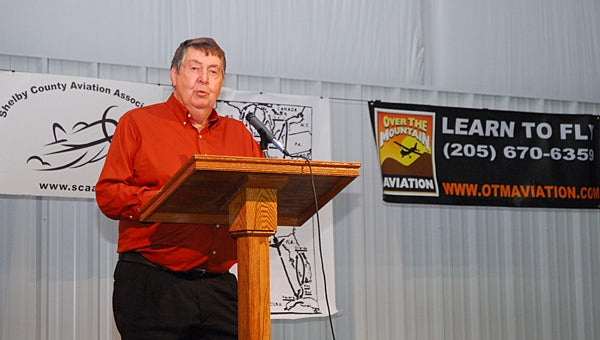
Harold Johnson, the co-pilot during a more than 30-hour airline hijacking in 1972, speaks during a visit to the Shelby County Airport on Nov. 6. (Reporter Photo/Neal Wagner)
By NEAL WAGNER / City Editor
To this day, Harold Johnson still remembers exactly how the worst 30 hours of his life began on Nov. 10, 1972.
“I heard a scuffle behind us, and I didn’t think much of it at the time,” Johnson said as he spoke to a group of about 100 visitors at the Shelby County Airport on Nov. 5. “Suddenly, the cockpit door burst open and a fellow had one of the flight attendants by the neck with a gun pointed at her head.
“He said ‘We are taking over the plane,’ and the flight attendant said ‘Billy Bob,’ who was the captain, ‘He’s not kidding,’” Johnson added.
Johnson was the co-pilot of Southern Airways Flight 49 when it became the victim of the longest commercial airline hijacking incident in the nation’s history. Johnson and his pilot, William Haas, originally were planning to fly from Memphis, Tenn., to Miami before events took a fateful turn.
Shortly after picking up passengers in Birmingham and taking off for Montgomery for a refueling stop, three men hijacked the plane, demanding a $10 million ransom, 10 bulletproof vests and 10 parachutes. The hijackers also demanded the flight head to Detroit to collect the ransom money.
After landing in Jackson, Miss., to refuel, the Douglas DC-9 traveled to Detroit, where it circled the airport before landing in Cleveland, Ohio, to refuel. After landing in Toronto, the hijackers threatened to crash the plane into a nuclear reactor in Oak Ridge, Tenn.
“One o’clock came, and that was the deadline for the ransom money,” Johnson said. “I told them ‘Fellows, we are on Eastern time now, and you made that demand on Central time.’ So, we bought ourselves an hour there.”
After landing in Lexington, Ky., the plane landed in Chattanooga, Tenn., where the hijackers collected $2 million in ransom money and Kentucky Fried Chicken, among other things, Johnson said.
The plane made a brief landing in Havana, Cuba, before landing for fuel in Key West, Fla. The next stop came in Orlando, Fla., where the plane was refueled before federal agents shot the plane’s tires out.
After the hijackers became enraged, one of them took Johnson into the passenger area, where the hijacker shot Johnson in the arm. The fragmented .38-caliber bullet is still in Johnson’s arm, he said.
The aircraft then safely landed again in Havana, where the hijackers fled the plane and were apprehended by the Cuban military.
“They thought they would be welcomed with open arms by (Fidel) Castro,” Johnson said of the hijackers.
The about 30 passengers and crew members then met with Castro, and Johnson was transported by taxi to a local hospital for treatment of his gunshot wound.
The next morning, the crew members and passengers were flown back to Miami on another Southern Airlines flight, which then retraced Flight 49’s originally scheduled stops.
“The hijackers stayed in a Havana prison until 1981 before they returned to the United States to face charges,” Johnson said, noting the three hijackers pleaded guilty to the incident, and have since served their prison sentences.


